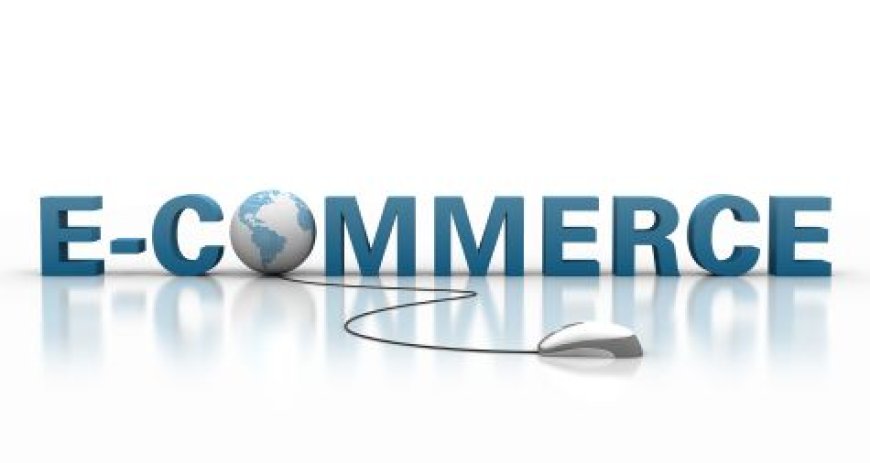Ecommerce Trends in South Asia: What Nepali Retailers Can Learn
Discover emerging ecommerce trends in South Asia and learn how Nepali retailers can adapt and thrive in the digital marketplace.

The ecommerce landscape in South Asia is evolving faster than ever.
From mobile shopping booms to regional logistics innovations, the region is quickly becoming a global ecommerce powerhouse. While countries like India and Bangladesh have seen rapid growth, Nepal is catching upand theres a lot Nepali retailers can learn by watching their neighbors.
If you're a business owner or aspiring ecommerce entrepreneur in Nepal, understanding these trends could be your competitive edge. Lets dive into the most important ecommerce shifts in South Asia and what you can apply to the Nepali market right now.
1. Mobile Commerce is Leading the Charge
Across South Asia, mobile-first shopping has become the norm.
With affordable smartphones and cheaper data plans, millions of users are skipping desktops entirely and buying straight from their phones. Platforms like Flipkart, Daraz, and Shopee have heavily optimized for mobile, creating lightning-fast apps that make shopping seamless.
In Nepal, retailers should prioritize mobile-first design. Your website or app must load fast, display clearly on small screens, and allow easy checkouts.
Tip: Make sure your ecommerce store is responsive, and test your user experience on a 3G connectionit should still work smoothly.
2. Cash-On-Delivery (COD) Still Dominates
Even as digital payments rise, COD remains king in many South Asian markets.
This is especially true in regions where trust in online shopping or digital wallets is still developing. In India and Bangladesh, companies offer flexible payment options to accommodate diverse customer preferences.
Nepali retailers should continue offering COD, but also start nudging customers toward digital wallets and QR payments by offering small discounts, reward points, or cashback.
Insight: Building payment trust is not about removing CODits about adding low-risk digital options alongside it.
3. Hyperlocal Logistics Are Changing the Game
In cities across India and Pakistan, ecommerce brands are partnering with hyperlocal delivery startups to speed up last-mile fulfillment.
Customers now expect delivery within 24 to 48 hours. Some even want same-day service.
Nepals geography is a challenge, but there's still huge potential in improving logistics in urban centers like Kathmandu, Pokhara, and Butwal. Local retailers should collaborate with bike-based delivery services and warehouse-sharing platforms to optimize costs.
Opportunity: If you can deliver fast and reliablyeven in just a few city areasyou gain a serious competitive advantage.
4. Social Commerce is Booming
Social media isn't just for branding anymoreit's a sales channel.
In South Asia, platforms like Facebook, Instagram, and TikTok are turning into virtual shopping malls. Businesses showcase products via reels, stories, and live videos. Influencers drive traffic directly to checkout pages.
In Nepal, Facebook Marketplace and Instagram shops are already popular. Now is the time to take it seriouslyinvest in content creation, influencer collaborations, and social proof.
Action Step: Start using short-form videos to explain, show, and sell your products directly within apps your audience already uses.
5. Localization Drives Conversions
One major trend in South Asian ecommerce is local language and culture customization.
Companies that offer localized contentlike regional languages, prices in local currency, and culturally relevant marketingsee higher conversions.
For Nepali retailers, this means going beyond English. Add Nepali language support, localize your visuals, and relate promotions to Nepali festivals and seasons.
Example: Run Dashain or Tihar-themed sales. Highlight how products can be gifts or festive essentials.
6. Sustainable & Ethical Brands Are on the Rise
Consumers in South Asia, especially Gen Z, are becoming eco-conscious.
They care about how products are made, who makes them, and their environmental impact. Indian D2C brands are already highlighting sustainable packaging, ethical sourcing, and transparent pricing.
Nepali ecommerce stores can embrace this too. Share behind-the-scenes videos, promote locally made goods, and communicate your values clearly.
Key Point: Being ethical is not just a nice-to-haveit's a major selling point.
7. Live Shopping and Video Selling Are the Future
Inspired by Chinas ecommerce success, live selling is gaining traction in South Asia.
Influencers and business owners host livestreams where they explain product features, answer questions in real time, and create a sense of urgency to buy.
Even in Nepal, many clothing brands and electronics sellers are already doing Facebook Live sales. This can be scaled up with better lighting, clear audio, and scheduled broadcasts.
Try This: Host a weekly "Live Sale Night" where you demo 510 products and offer limited-time discounts.
8. AI Tools and Automation are Getting Smarter
From chatbots to product recommendations, South Asian ecommerce brands are leveraging AI to personalize the shopping experience.
Nepali retailers may not need complex systems yet, but simple tools like chatbots for FAQs, email automation, and basic recommendation engines can significantly improve user experience and sales.
Start Small: Use platforms like Mailchimp, ManyChat, or Shopify plugins to automate basic workflows without needing tech teams.
Final Thoughts: Nepal's Next Ecommerce Leap
South Asias ecommerce revolution is in full swingand Nepal is poised to ride the wave.
By learning from regional leaders and adapting proven strategies to the local context, Nepali retailers can grow stronger, smarter, and more connected to their customers.
The key isnt to copy, but to localize, personalize, and innovate with your unique audience in mind.
Whether you're running a side hustle or managing a full-fledged online store, these trends offer a roadmap for long-term growth.
Stay ahead. Stay curious. And start smallbut start now.






































